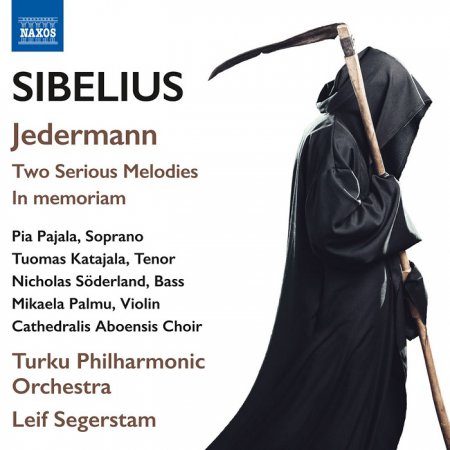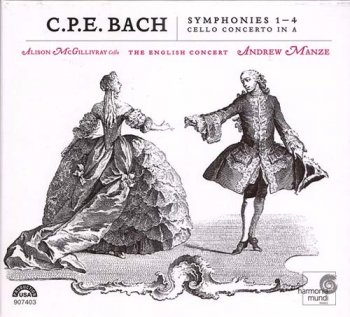Tony Banks (ex-Genesis) - Collection: 7 albums (1979-2012)

Tony Banks (ex-Genesis) - Collection: 7 albums (1979-2012)
Artist: Tony Banks Title Of Album: Collection Year Of Release: 1979-2012 Country: UK Genre: Prog Rock, Art Rock, Classical Quality: FLAC (*image + .cue,log) Bitrate: Lossless Time: 06:14:42 Size RAR: ~ 3,26 GB Password / Пароль : 1965 Upload: xFile.cloud Recovery 5%
11 10, 2025
UK: Ultimate Collector's Edition 14CD + 4Blu-ray Box 2016
Lossless Galaxy Release UK: 2016 Ultimate Collector's Edition 14CD + 4Blu-ray Box Set Globe Music Only CD Performer: UK Box / Albums: 2016 Ultimate Collector's Edition 1978 UK • 1978 UK Extras • 1978 UK BD 1978 Live In Boston • 1978 Live In Philadelphia • 1978 Live In Cleveland 1979 Danger Money • 1979 Danger Money Extras • 1979 Danger Money BD 1979 Night After Night Extended Version 2CD • 1979 Night After Night Original Version 1979 Night After Night Extended Version BD 2011 Reunion 2CD •

UK: Ultimate Collector's Edition 14CD + 4Blu-ray Box 2016
Lossless Galaxy Release UK: 2016 Ultimate Collector's Edition 14CD + 4Blu-ray Box Set Globe Music Only CD Performer: UK Box / Albums: 2016 Ultimate Collector's Edition 1978 UK • 1978 UK Extras • 1978 UK BD 1978 Live In Boston • 1978 Live In Philadelphia • 1978 Live In Cleveland 1979 Danger Money • 1979 Danger Money Extras • 1979 Danger Money BD 1979 Night After Night Extended Version 2CD • 1979 Night After Night Original Version 1979 Night After Night Extended Version BD 2011 Reunion 2CD •
11 10, 2025
Beat - Neon Heat Disease - Live In Los Angeles (2025) 2CD
Artist: Beat Title Of Album: Live In Los Angeles Year Of Release: 2025 Label (Catalog#) :Inside Out Music IOM756 Country:: USA Genre: Prog Rock Quality: FLAC (tracks+log) Bitrate: Lossless Time: 44:24+66:38 Full Size: 755Mb(+3%)(covers) Upload: xfile.cloud Legendary former King Crimson members Adrian Belew and Tony Levin banded together with guitar virtuoso Steve Vai and explosive Tool drummer Danny Carey to create BEAT, a creative reinterpretation of the three iconic 1980s King Crimson albums

Beat - Neon Heat Disease - Live In Los Angeles (2025) 2CD
Artist: Beat Title Of Album: Live In Los Angeles Year Of Release: 2025 Label (Catalog#) :Inside Out Music IOM756 Country:: USA Genre: Prog Rock Quality: FLAC (tracks+log) Bitrate: Lossless Time: 44:24+66:38 Full Size: 755Mb(+3%)(covers) Upload: xfile.cloud Legendary former King Crimson members Adrian Belew and Tony Levin banded together with guitar virtuoso Steve Vai and explosive Tool drummer Danny Carey to create BEAT, a creative reinterpretation of the three iconic 1980s King Crimson albums
10 10, 2025
Жанры
Lossless Galaxy Release
Русская музыка
--Поп
--Рок
--Панк
--Альтернатива
--Металл
--Рэп, Хип-Хоп, R'n'B
--Джаз и Блюз
--Фолк
--Шансон, Авторская песня
--СССР
Зарубежная музыка
--Pop
--Rock
--Hard Rock
--Progressive & Art-Rock
--Pop-Rock & Soft Rock
--Instrumental Rock
--Heavy, Traditional, Industrial Metal
--Power, Gothic, Sympho Metal
--Thrash, Speed, Groove, Modern Metal
--Death, Melodic Death, Doom, Dark Metal
--Black, Pagan, Folk, Viking Metal
--Alternative
--Punk
--Disco, Eurodance
--Rap, Hip Hop, R'n'B
--Reggae, Ska, Dub
--Jazz, Blues, Soul
--Folk, Country, Ethnic
--Electronic, Ambient, New Wave
--House, Techno, Trance
Другие жанры
--New Age, Relax, Meditative & Flamenco
--Chillout, Lounge, Downtempo, Trip-Hop
--Drum & Bass, Jungle, Breakbeat, IDM
--Classical / Классическая музыка
--Soundtrack
--Музыкальные сказки
Vinyl Rip
HI-Res / DVD-Audio / DTS
--SACD
--DSD
--DVD-Audio
Сборники Lossless-Galaxy
Альбомы 2022
Альбомы 2023
Альбомы 2024
Теги
1st Press 2022 2023 2024 2025 70... AOR Black Metal Blues Blues Rock Bootleg Series Classic Rock Death Metal Discography Exclusive for Lossless-Galaxy Folk Rock Fusion Hard Rock Heavy Metal Hi-Res Japanese Edition Jazz Jazz Rock lossless Melodic Death Metal Melodic Rock Modern Electric Blues Pop Pop Rock Power Metal Prog Rock Progressive Metal Progressive Rock Psych Rock Psychedelic Rock Rock SACD Symphonic Metal Thrash Metal Дискографии от KoGGaN
Архивы
Опрос
В каком формате хотели бы видеть релизы на сайте ?
 Автор: artmuss, 22 сентября 2016, Комментариев: 0, Просмотров: 904
Автор: artmuss, 22 сентября 2016, Комментариев: 0, Просмотров: 904Lahti Symphony Orchestra, Osmo Vanska - Sibelius: The Complete Symphonies [4CD Box Set] (2001)
Artist: Lahti Symphony Orchestra, Osmo Vanska
Title Of Album: Sibelius: The Complete Symphonies
Year Of Release: 2001
Label (Catalog#): BIS [CD-1286/1288]
Genre: Classical, Romantic
Quality: FLAC (tracks +.cue,log,scans)
Bitrate: Lossless
Time: 4:47:48
Full Size: 1.02 gb
Upload: Turbobit / DepFile / HitFile
Title Of Album: Sibelius: The Complete Symphonies
Year Of Release: 2001
Label (Catalog#): BIS [CD-1286/1288]
Genre: Classical, Romantic
Quality: FLAC (tracks +.cue,log,scans)
Bitrate: Lossless
Time: 4:47:48
Full Size: 1.02 gb
Upload: Turbobit / DepFile / HitFile
TRACKLIST:
Symphony No. 1 In E Minor, Op. 39
1-1 1. Andante, Ma Non Troppo - Allegro Energico 9:50
1-2 2. Andante (Ma Non Troppo Lento) 8:58
1-3 3. Scherzo. Allegro 4:31
1-4 4. Finale (Quasi Una Fantasia). Andante - Allegro Molto 12:09
Symphony No. 4 In A Minor, Op. 63
1-5 1. Tempo Molto Moderato, Quasi Adagio 11:40
1-6 2. Allegro Molto Vivace 4:38
1-7 3. Il Tempo Largo 14:06
1-8 4. Allegro 9:41
Symphony No.2 In D Major, Op.43
2-1 1. Allegretto 9:24
2-2 2. Tempo Andante, Ma Rubato 14:30
2-3 3. Vivacissimo 5:58
2-4 4. Finale - Allegro Moderato 15:17
Symphony No.3 In C Major, Op.52
2-5 1. Allegro Moderato 10:24
2-6 2. Andantino Con Moto, Quasi Allegretto 11:18
2-7 3. Moderato - Allegro (Ma Non Tanto) 9:22
Symphony No. 5 In E-flat Major, Op. 82 (Original 1915 Version)
3-1 1. Tempo Tranquillo Assai - 8:27
3-2 2. Allegro Commodo 5:20
3-3 3. Andante Mosso 7:45
3-4 4. Allegro Commodo - Largamente Molto 14:09
Symphony No. 5 In E-flat Major, Op. 82 (Final 1919 Version)
3-5 1. Tempo Molto Moderato - Allegro Moderato 13:29
3-6 2. Andante Mosso, Quasi Allegretto 8:47
3-7 3. Allegro Molto - Largamente Assai 9:38
Symphony No. 6 In D Minor, Op. 104
4-1 1. Allegro Molto Moderato 8:37
4-2 2. Allegretto Moderato 6:31
4-3 3. Poco Vivace 3:24
4-4 4. Allegro Molto 8:43
4-5 Symphony No. 7 In C Major, Op. 105 23:03
4-6 Tapiola, Tone Poem For Orchestra, Op. 112 17:56
:: DOWNLOAD LINKS :: СКАЧАТЬ ::
Внимание! У Вас нет прав для просмотра скрытого текста.
Похожие новости:
Комментарии отсутствуют
Добавить комментарий!
Информация
Посетители, находящиеся в группе Гости, не могут оставлять комментарии к данной публикации.
![Lahti Symphony Orchestra, Osmo Vanska - Sibelius: The Complete Symphonies [4CD Box Set] (2001) Lahti Symphony Orchestra, Osmo Vanska - Sibelius: The Complete Symphonies [4CD Box Set] (2001)](/uploads/posts/2016-09/thumbs/1474565948_45667yt67.jpg)


![Mariss Jansons & Oslo Philharmonic Orchestra - Tchaikovsky: The Symphonies [6CD Remastered Box Set] (2006)](/uploads/posts/2016-09/thumbs/1472729047_5634.jpg)

![Stephen Hough, Dallas Symphony Orchestra - S. Rachmaninov: Complete Works for Piano and Orchestra (2004) [SACD]](/uploads/posts/2016-03/thumbs/1458632561_folder.jpg)
